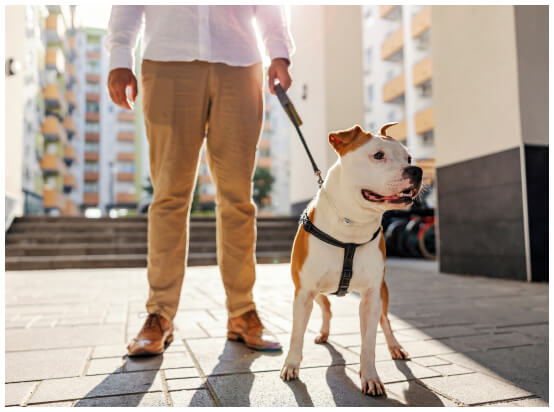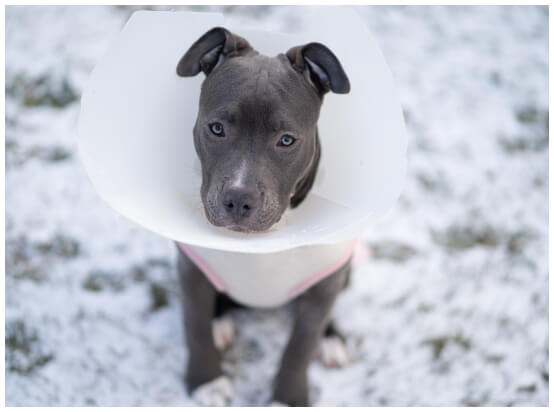How to Train Your Dog Not to Bite
Any dog can bite and cause a serious injury. As a pet owner, it is important to train your dog from an early age to avoid biting.
Protect yourself, your loved ones, and others by helping your dog learn not to bite. Below, R. Alan Cleveland, LLC reviews eight helpful tips and techniques you can use to train your dog.

Take Time Outs
- Dogs sometimes bite when they’re overly excited by playtime or other interactions and need an outlet for their energy.
- If your dog bites you or anyone else, try a “time out” to discourage biting behaviors.
- Immediately after your dog bites, remove your hand from the dog’s mouth and turn away from them.
- Keep your face neutral, avoid making eye contact. Tuck your hands beneath your arms to show your dog that if the animal bites, it will lose your attention.
- If your dog keeps biting even after you turn away, place the dog in their crate, behind a safety gate, or in another room to show them playtime is over.
- Do not reward biting with any attention at all, even negative attention such as yelling or scolding. Do not re-engage with your dog until they have calmed down.

Use Bite Inhibition Techniques
- Dogs commonly use “play bites” to interact and wrestle with other dogs while puppies.
- When dogs bite too hard, they let each other know by making high-pitched yelps. A yelp lets a biting dog know to snap out of it and release their playmate.
- You can mimic this natural response yourself by practicing “bite inhibition” techniques when you interact with your dog.
- To teach your dog bite inhibition, give a high-pitched “Ow!” any time they bite you or anyone else.
- For many dogs, this loud yelp will let them know they are biting too hard and need to back off.
- However, this technique doesn’t work for all dogs. Some dogs get even more excited when they hear a yelp. Pay attention to how your dog responds and try other methods if necessary.

Offer Alternatives
- Biting for puppies is similar to teething for babies.
- Mouthing, teething, and play biting help puppies learn how, when, and where they can use their teeth to explore.
- When your dog starts nibbling on your fingers or a piece of furniture, offer them a chew toy to redirect their biting in a healthy, positive way.
- As you train your dog not to bite, it’s best to keep a fun toy of theirs handy at all times so you’re ready to refocus their attention as needed.
- If your dog continues to bite even after you have repeatedly offered them a toy, they may be overexcited. Try the time-out method or let them run around in a yard to burn off pent-up energy.

Work on Socialization
- Socializing your dog from an early age can help them learn how to interact with people and other animals in a safe way.
- Socialization is an important part of training.
- Dogs placed in unfamiliar situations may experience fear which is a common cause of aggressive behavior.
- Dogs who are well-socialized are less likely to react to unfamiliar situations, people, or animals with aggressive behaviors, such as biting.
- You can socialize puppies and older dogs by taking them for daily walks, exposing them to a variety of people, and visiting the dog park.

Be Sure to Spay or Neuter
- According to research published by the American Society for the Prevention of Cruelty to Animals (ASPCA), unneutered male dogs are involved in 70 to 76 percent of all reported dog bites.
- Intact male dogs are also 2.6 times more likely to bite than dogs that have been neutered.
- Non-spayed female dogs are more likely to attract stray males, increasing both the local risk of stray dog bites and the population of stray dogs.
- Spaying or neutering your dog is not a guarantee that you will never bite, but it’s a good way to decrease the likelihood of aggressive behavior.

Use Positive Reinforcement
- Reinforcing your dog’s good behavior is as important as discouraging their bad behavior.
- If your dog has been behaving appropriately by playing gently, use positive reinforcement to let them know they’re doing a good job.
- Good examples of positive reinforcement include small treats, gentle pats, praise, and more playtime.
- Research shows positive reinforcement is a more effective training tool than punishments, such as yelling.
- One study by the University of Pennsylvania found that aggressive punishment methods are less effective and can make dogs more aggressive themselves.

Try Obedience Training
- If you feel like you’ve tried everything and your dog continues to bite, consider enrolling your dog in an obedience class.
- Obedience training can give your dog structure, which helps them understand what to expect.
- Your dog’s trainer can provide you with effective strategies and commands to bond and interact with your dog in a healthy way.
- As you and your dog gain a better understanding of one another, you will have an easier time managing your dog’s behavior, and they will be less inclined to bite

Stay Patient and Consistent
- The best way to help your dog learn good behavior is to repeat lessons frequently and consistently.
- It can be difficult to remain patient at first, but repetition and consistency are key.
- Never strike or otherwise harm your dog. Physical and aggressive punishments may work in the short term, but they are not effective long-term teaching methods.
- If you have other family members or frequent visitors in the house, teach them to discourage the dog from biting, offer toys as a distraction, and use positive reinforcement.
- Contact our Athens dog bite injury lawyer if you need help today.
